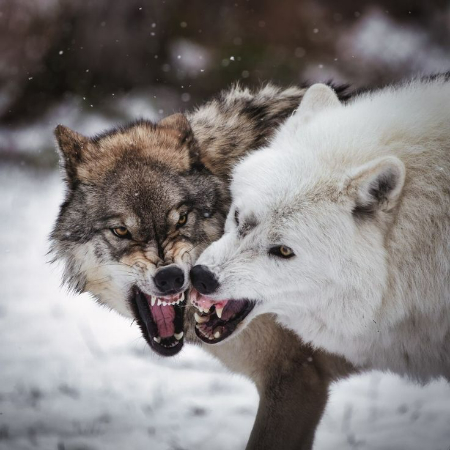The Evolution of Dogs: From Wolves to Man’s Best Friend
Although dogs are regarded as man’s greatest friend, their close relationship with humans is the product of an interesting evolutionary process.
Throughout thousands of years, dogs have experienced considerable transformations from their wild wolf ancestors to the beloved domestic companions of today. This essay explores the evolutionary route that turned wolves into devoted friends.
The Beginning: Wolves and Early Humans
Between 20,000 and 40,000 years ago, wolves and humans started establishing a partnership, which marked the beginning of dog domestication. Wolves and early humans hunted and scavenged, frequently engaging in competition for food.

Attracted by food scraps, a few wolves started hanging around close to human settlements. These wolves were probably more accepting of human presence and less hostile. A mutually beneficial partnership emerged throughout time: wolves helped with hunting and provided protection while humans supplied food.
The foundation for domestication was established by this symbiotic interaction. More gregarious and less scared of humans wolves flourished over the generations, eventually transforming into the dogs we know today. This procedure signaled the start of an enduring relationship between humans and animals.
Natural Selection and Domestication
About 20,000 to 40,000 years ago, wolves and humans first developed a partnership that led to the domestication of dogs. Wolves and early humans engaged in frequent food competition as both hunters and scavengers. Some wolves started to hang around human encampments, drawn in by food scraps.
These wolves were probably friendlier and less hostile toward people. A mutually advantageous connection emerged throughout time: people supplied food, and wolves provided protection and hunting assistance. Domestication began with this symbiotic interaction.
Dogs originated from gregarious wolves that flourished in human environments over many generations. The destiny of both species was shaped by this process, which signaled the start of a lifelong human-animal link.
Genetic Changes
Between 20,000 and 40,000 years ago, wolves and humans started establishing a partnership, which marked the beginning of dog domestication. Hunting and scavengers, wolves, and early humans frequently engaged in food competition.

Some wolves hung around human encampments, drawn by food scraps. These wolves were probably more accepting of people and less hostile. A mutually advantageous connection evolved throughout time: wolves gave protection and assistance in hunting, while humans provided food. The foundation for domestication was established by this symbiotic interaction.
More gregarious and less scared of humans wolves flourished over many generations, eventually developing into dogs. This procedure shaped both species’ futures by establishing a strong link between humans and animals.
Dogs in Human Society
Dogs became more friends and laborers in human society as they were increasingly domesticated, moving beyond their duties as guardians and hunting partners. Various varieties were created for certain purposes: hunting dogs were used to seek and retrieve games, herding dogs were used to manage livestock, and toy breeds were created for companionship.
Over time, the relationship between people and dogs deepened, and dogs were valued and even worshipped in many civilizations. Their representation in literature, art, and mythology evolved into emblems of fidelity and unwavering love.
This growing bond demonstrated how dogs’ importance in human existence has changed throughout time, emphasizing both their adaptability and the emotional bonds they created with their human counterparts.
Modern-Day Dogs
Dogs are now an essential aspect of life for humans, acting as assistance dogs, therapy animals, companions, and more. They are now able to enjoy longer, healthier lives with their human counterparts because of advancements in veterinary care and nutrition.

The scientific community is contributing to our growing understanding of canine behavior, cognition, and emotions, which is fostering further evolution in the human-dog connection. This information has strengthened human-dog relationships, improved training techniques, and encouraged responsible pet ownership.
As a result, dogs are appreciated for their company as well as for helping people in a variety of ways, underscoring the strong and developing relationship between the two species.
The future of the human-dog relationship
Dogs’ transformation from wolves to man’s greatest friend is evidence of both the strength of natural selection and the significant impact of human intervention.
Dogs have developed into one of the most varied and cherished animals on the earth by a mix of genetic adaptability, selective breeding, and mutual benefit.
A wonderful illustration of the long-lasting bond between people and animals is their evolution from untamed predators to devoted companions.
Doglime for more dog-related information.










